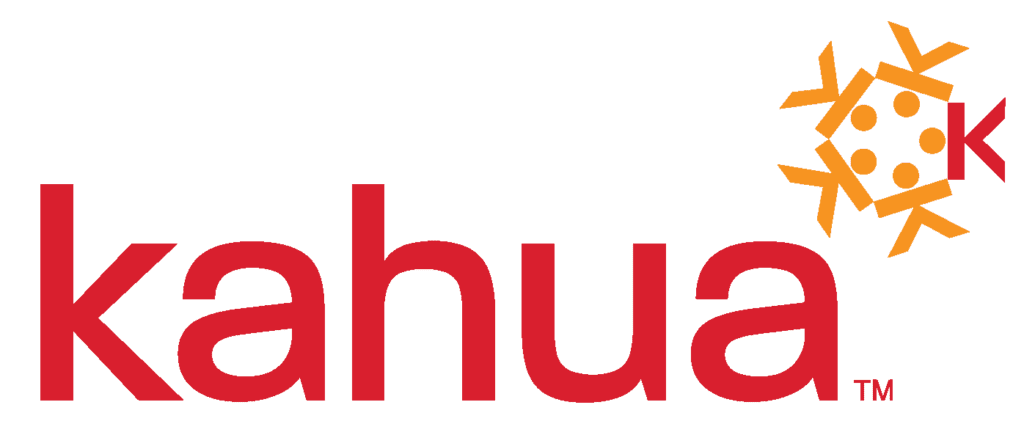The Increasingly Important Role of PMIS in Construction
Calling the construction industry a tech laggard has become cliché, but it reflects a real pattern. Unlike manufacturing or farming, projects rarely repeat. Every site, team, and contract is different, which makes change hard to measure and risky to scale.
With so many variables, teams typically only adopt new tools when:
- The upside is undeniable, such as dramatic gains in performance or profit
- A competitor gains a visible edge
That’s why a construction PMIS matters even more now. A project management information system consolidates cost, schedule, scope, documents, and risk into a single place. This way, you can standardize how work gets done and prove progress. When the next project won’t look like the last, a PMIS becomes the throughline.
Read on to learn:
- What is a Construction PMIS?
- Why PMIS Adoption is Accelerating in Construction
- Core Features and Functions of a Modern PMIS
- How Owners Extract Value with PMIS
- How to Choose a PMIS
- Common Challenges in PMIS Implementation
- Optimizing Your PMIS for the Future of Construction
- Make PMIS Central to Your Capital Program Strategy
- FAQ: Construction PMIS
What Is a Construction PMIS?
A construction PMIS is a centralized, configurable system that standardizes how project data is collected, governed, and used across the lifecycle. It enables you to more effectively manage cost, schedule, scope, documents, risk, and compliance.
A construction PMIS also gives you real-time visibility into performance and exposure. This way, decisions are made on reliable information rather than guesswork.
How PMIS differs from traditional tools and spreadsheets
Point tools and spreadsheets are isolated, versioning-prone, and rely on manual rollups. They lack auditable workflows, consistent data standards, and portfolio-level reporting. As complexity scales, project managers become “spreadsheet wranglers,” wasting time and increasing risk.
A PMIS in construction replaces those ad-hoc processes with governed workflows, role-based access, and live dashboards. This means you can deliver capital projects on time, on budget, and with complete transparency.
Why PMIS Adoption Is Accelerating in Construction
What once felt radical is now crucial. Three major shifts have pushed PMIS adoption across owners and large capital programs.
Remote and Hybrid Collaboration Are Now Standard
Remote and hybrid collaboration is now the norm. Virtual design reviews, coordination meetings, and e-signatures moved from exceptions to defaults.
A PMIS in construction provides governed, role-based workflows. This allows dispersed teams to review, approve, and document decisions without email chains.
Project Data Needs Are Exploding
Building information modeling, field apps, photos, sensors, and funding records generate massive datasets. Without a hub, information fragments and risks hide.
A construction PMIS centralizes data, enforces standards, and surfaces insights through dashboards and a construction analytics platform.
Bigger Programs Require Tighter Scrutiny
Multisite portfolios and publicly funded work demand portfolio-level visibility, cost, and sources-of-funds control as well as auditable histories. Executives want real-time answers on exposure, forecast, and change impact.
The value of a construction PMIS is clear:
- Faster cycle times from standardized workflows.
- Fewer surprises through live cost and schedule reporting.
- Easier compliance with traceable records.
Core Features and Functions of a Modern PMIS
A modern, configurable PMIS's main goal: one place to plan, execute, and report with high flexibility. Core features include:
- Scheduling and Planning: Set and track baselines, define dependencies, and manage updates as conditions change. Align milestones across programs and integrate with scheduling tools.
- Cost and Fund Management: Build budgets, track commitments and expenses, and generate forecasts and cash-flow views. Tie sources of funds to projects to prevent overcommitment.
- Document and Submittal Control: Manage drawings, specs, submittals, and requests for information (RFIs) with versioning, automated approvals, and complete audit trails.
- Collaboration and Workflows: Connect the field and office with role-based routing, mobile capture, and external participant access to record decisions and accountability in the system.
- Analytics and Reporting: Provide executive and project dashboards, track key performance indicators (KPIs), and deliver portfolio oversight with drill-through to the source record.
- Security and Scalability: Implement single sign-on, multifactor authentication, encryption, and granular permissions to improve security, and integrate systems to scale from single projects to multi-program portfolios.
How Owners Extract Value With PMIS
As an owner, you can measure value in fewer surprises, faster answers, and cleaner audits. A modern PMIS delivers that in practical ways:
- Real-Time Visibility: Live dashboards and threshold alerts surface exceptions immediately; drill-through views replace status meetings and inbox hunts.
- Decision Speed: Standardized workflows auto-route approvals and capture context, so leaders act on the latest record, not outdated attachments.
- Cost and Schedule Risk Reduction: Integrated change control, forecast accuracy checks, and fund-to-commit tracking expose variances early, improving predictability.
- Portfolio-Level Oversight: Comparable KPIs and rollups across sites or regions reveal where to target resources and cash, providing a single view from program to project.
- Compliance and Audit Readiness: Immutable histories, role-based permissions, and e-signatures create an auditable trail, and exports support public reporting and institutional reviews.
For a deeper dive into outcomes and ROI levers, see these PMIS benefits.
How to Choose a PMIS
You can use the following checklist to evaluate platforms and avoid getting boxed in:
- Scalability: Look for consistent hierarchies, reusable templates, and performance tested at enterprise scale.
- Integration: Confirm out-of-the-box connectors and open integrations with existing systems. Decide which system of record applies to each data type, and test bidirectional flows.
- Configurable Workflows: Favor low-code configuration of objects, fields, and routing over custom code. You should be able to adapt to policy changes without a vendor backlog — admin tooling and environment management matter.
- Security and Compliance: Require SSO/MFA, encryption in transit/at rest, detailed audit logs, and documented cloud posture. Public and institutional owners should verify authorizations, data residency, and retention controls.
- Usability & Adoption: Insist on role-based user experience, mobile capture, and clear task queues. Measure cycle times and data completeness before you decide.
For a deeper buyer guide, including traps to avoid and evaluation worksheets, see how to choose a PMIS.
Common Challenges in PMIS Implementation
Even robust platforms can falter without a disciplined rollout. That's why making careful choices is essential. Watch out for these common mistakes:
- Data Migration and Cleanup. Define mappings, validate required fields, and load a “minimum viable dataset” before scaling to eliminate duplicates, inconsistent codes, and missing metadata.
- User Adoption and Culture. Secure executive sponsorship, train by role, and publish quick-win metrics to reinforce new habits outside of email and spreadsheets.
- Integration Complexity. To minimize drift, specify data ownership, design bidirectional flows where needed, and stage integrations behind a stable data model.
- Over-Customization and Cost. Prefer standard objects and low-code configuration, and tie every change to a policy or KPI to avoid increased admin and upgrade costs.
- Legacy System Lock-In. Plan decommissioning early — export strategy, read-only access to history, and a time-boxed parallel run — to quickly cut contracts, archives, and complacency with older systems.
Optimizing Your PMIS for the Future of Construction
Future-ready PMIS environments treat the system as a platform, not a point tool.
Build for Tech Enablement
Start by making your PMIS the hub for AI assistants, Internet of Things (IoT) sensors, drones, and digital twins:
- Ingest telemetry and model updates via APIs.
- Normalize data with clear standards.
- Trigger governed workflows and analytics.
Use Low-Code Configuration
Use low-code configuration to codify new processes quickly as delivery models evolve. Lean, modular, and offsite work demand component-level traceability, takt-time scheduling, and package-based cost control.
Strengthen Analytics
Strengthen the analytics layer with a governed semantic model, business intelligence (BI) connectors, and lineage. This way, emerging data sources feed reliable KPIs, forecasts, and anomaly detection.
Enforce Security and Compliance
For security and compliance, enforce least-privilege access, encryption, audit logs, and continuous posture reviews. This is especially critical in the public sector and large-scale infrastructure construction.
The payoff: a PMIS that adapts as your tech ecosystem changes while preserving data integrity, operational readiness, and auditability.
Make PMIS Central to Your Capital Program Strategy
You’ve seen the case: A construction PMIS defines a centralized system, standardizes core features, delivers owner value, and offers clear selection criteria. Now, make it strategic.
Treat a PMIS as the operational backbone of your capital program, so you can get real-time answers and audit-ready records. Choose a platform that scales from one project to multiprogram portfolios, integrates with existing systems, and adapts quickly as policies and delivery models evolve.
Kahua supports owners and program managers with program management, cost and fund controls, document and submittal workflows, analytics, and low-code configuration. See how fast you can tailor processes with Kahua’s PMIS kBuilder and make PMIS the throughline from planning to closeout.
FAQ: Construction PMIS
How Is a PMIS Different From Project Management Software?
Unlike task-oriented project management software, a PMIS system is the system of record for capital delivery. It:
- Enforces data standards and auditable workflows.
- Integrates costs, schedules, and documents with existing systems.
- Supports external participants.
- Provides portfolio-level reporting — not just Gantt charts or team collaboration.
What Are the Key Features of a Construction PMIS?
Core features include:
- Budgeting, change control, contracts, pay applications, and sources of funds.
- Scheduling and milestones.
- Submittals, RFIs, and drawing control.
- Role-based workflows with external access.
- Dashboards and KPIs with BI export.
- Integrations and APIs.
- Security tools like single sign-on, multifactor authentication, and encryption.
- Asset-centric closeout and handovers.


